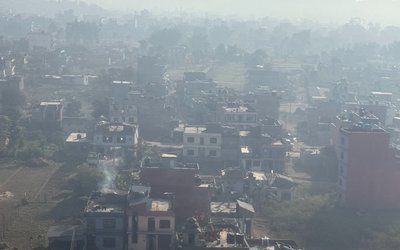
Despite a number of important historical and cultural sites in Sankhu, a traditional and old Newar city of Kathmandu valley, the city is yet to come into the forefront of public discussions. The historically and culturally very significant city of Sankhu has mostly remained as a hidden city.
Written jointly by Prof. Sharma and Prof. Shrestha, researchers of Center for Nepal and Asian Studies, the book Sankhu, Historical and Cultural Heritage, gives vivid pictures of the ancient city, including its cultural, political and economic dynamics.
Although several books have been published highlighting and discussing historical and cultural heritage sites of Kathmandu valley, this book is among a few to focus on the very important city of Sankhu. Professor Sharma and Professor Shrestha studied sculptures and did a research before drawing the conclusion about Sankhu.
Alongside all the important cultural, religious and historical sites, Sankhu, a very important place in the ancient route of Kathmandu-Tibet trade, is gradually vanishing in its significance and losing its architectural wonder. Professor Sharma and Professor Shrestha have analyzed documents, inscriptions and other research materials to show the importance of Sankhu.
“Sankhu is in fact endowed with many historical and cultural heritages, which eventually enhance our knowledge not only about Newars’ rich cultural assets, but also about unique cultural components of the art history of Kathmandu valley,” writes Nani Ram Khatri, executive director of CNAS.
Endowed with rich art and architecture, ritual practices and cultural and religious festivals, Sankhu is one of the most important parts of the broader civilization of Kathmandu valley. The author duo have shown how Sankhu has been preserving the identity of cultural co-existence for a long time among the people of different castes and religious beliefs.
The book is the outcome of a long field study undertaken by the two researchers, almost one decade. Therefore, the work is totally based on the field data and enriched by the documentation of arts, architectures, rituals and festivals on the one hand and scholarly analyses on verification, co-relation and comparison on the other.
At a time when many heritage sites are being destroyed day by day and many rituals are in the state of rapid extinction because of the natural disaster and human misdeed, causing loss of the identity of human civilization, the book should help people do something for Sankhu.
Situated at the foothills of the Shivapuri mountain range, 18 kilometers north-east of Kathmandu, Sankhu has a broader link with the culture and civilization of the Kathmandu valley.
“The tangible and intangible cultures of Sankhu are in fact the contribution made by the rulers as well as the settlers of the region from early period. Many cultural elements identified as the knowledge of skillful products of the past on the one hand and their continuation into the traditional practices in many performances on the other, are the indicative factors to understand its rich heritage,” write professors Sharma and Shrestha.
“The work is in fact the outcome of field research done intermittently from the time of 2001. Both of us visited the site during festive occasions and thereby collected photographs, inscriptions and many other information important for the study.”
Following the explorative method in conducting research, the authors unearthed the various unexplored historical and cultural objects and practices.
Although many native and foreign scholars have published books, research reports and articles concentrating on history and culture of Sankhu, they don’t study everything in depth and they are inadequate to analyse the city. There was a huge gap in the historical documents on the city.
“Our work focuses on the analysis through identification and verification of the vivid art works distributed in the region. The cultural practice has been enriched by the rituals and celebration which Sankhu revealed the efforts to enliven it,” the author duo note.
With massive devastation by earthquake, Sankhu is in the process of revival and reconstruction. The book is very important for Sankhu to regain its old glory and shape during its reconstruction. As several efforts are being made to rebuild the earthquake destroyed ancient temples of Kathmandu valley, only a few steps have been taken to rebuild the temples and architectural sites of Sankhu city, a historically valuable city of Kathmandu valley.

Keshab Poudel
Poudel is the editor of New Spotlight Magazine.
- KUL MAN GHISING: Bowing Down To The People
- Apr 13, 2025
- POLITICAL VIOLENCE: Culture of Impunity
- Apr 11, 2025
- PM OLI MEETS PM MODI: No Progress
- Apr 09, 2025
- PM OLI’S THAILAND VISIT: Flip Flop
- Apr 08, 2025
- FM Dr. Deuba’s India Visit: Mission Aborted
- Mar 26, 2025















